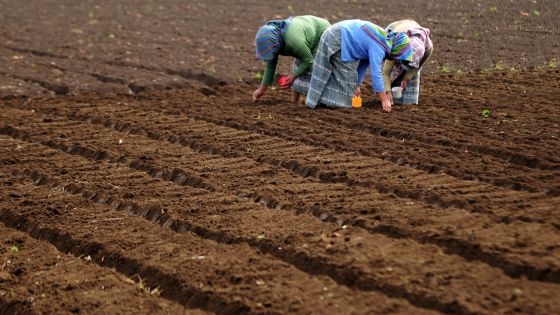Latin America: A food superpower
According to estimates from organisations and experts, food production will have to increase by 70% to ensure sufficient supply for more than 9 billion people, the majority of which will come from increased intensification of existing land, according to FAO estimates.
However, such increases will have a knock-on effect on soil quality. Intensive agriculture practices are one of the primary threats to soil vitality worldwide due in part to:
1) Constant ploughing: Vegetation maintains the soils stability, keeping the layers protected from the elements and preventing the nutrient-rich top layers from washing away through their root network. With each harvest and sowing season, farmers strip away these plants, leaving the soil unprotected.
2) Use of fertilizers: Spraying crops with fertilizers does nothing to address the poor quality of the soil underneath. If not absorbed by the plants, the chemicals remain on the surface and are flushed away by the rain, often contaminating the local water system.
3) Climate change: Almost a third of global greenhouse gas emissions are generated by the agricultural sector, a major factor in climate change. This in turns speeds up the degradation and desertification process, thus increasing the need for energy, water and fertilizer use in food production.
Agricultural products make up around a quarter of Latin American exports, and a 13% of agricultural trade worldwide. And with 28% of potential new arable land in the region, Latin America is well positioned to increase production.
However, here too, is the threat of soil degradation being felt. For example in:
- Argentina: For over a century, sheep have been the primary income source in the Argentine Patagonia. Today, 85% of the region is affected by land degradation, the majority caused by over-grazing.
- Colombia: 148 000 hectares of woodland is lost each year, a large part of which is then dedicated to cattle raising – a sector which already occupies 30% of the national territory
Soil degradation isn’t only a threat to livelihoods, but also to biodiversity and regional ecosystems. As a result, the restoration process is long and complex.
“One of the challenges of restoring land which has been degraded is that it is very expensive, especially if that land is abandoned,” explains Bakarr. “We encourage farmers to keep using the land, as where livelihoods are tightly embedded with the soil, there is an incentive to invest resources on keeping the soil healthy.”
It is a strategy which is already seeing results in the region.
Instead of felling forests, cattle herders in Colombia, Costa Rica and Nicaragua have received help to raise their herds in the shade. Known as ‘silvopastoral’ agriculture, it helps to restore grazing land and protect biodiversity by raising livestock in the shade.
Dry lands are the most at risk from degradation and desertification. In Argentina, these lands make up three-quarters of the national territory, of which almost half are found in Patagonia. With the help of the GEF, livestock herders in this region have put in place sustainable practices to reduce the pressure on the land and improve the quality of life of the people who live there.

